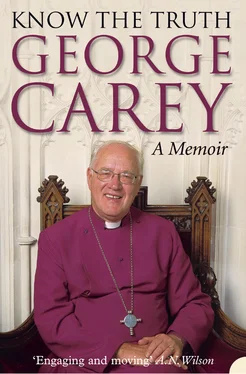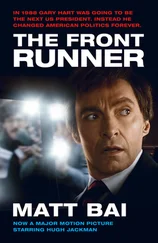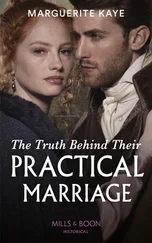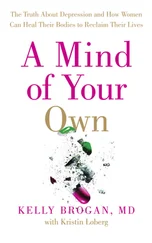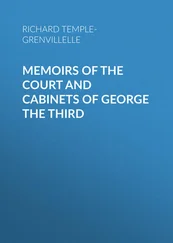George Carey - Know the Truth
Здесь есть возможность читать онлайн «George Carey - Know the Truth» — ознакомительный отрывок электронной книги совершенно бесплатно, а после прочтения отрывка купить полную версию. В некоторых случаях можно слушать аудио, скачать через торрент в формате fb2 и присутствует краткое содержание. Жанр: unrecognised, на английском языке. Описание произведения, (предисловие) а так же отзывы посетителей доступны на портале библиотеки ЛибКат.
- Название:Know the Truth
- Автор:
- Жанр:
- Год:неизвестен
- ISBN:нет данных
- Рейтинг книги:3 / 5. Голосов: 1
-
Избранное:Добавить в избранное
- Отзывы:
-
Ваша оценка:
- 60
- 1
- 2
- 3
- 4
- 5
Know the Truth: краткое содержание, описание и аннотация
Предлагаем к чтению аннотацию, описание, краткое содержание или предисловие (зависит от того, что написал сам автор книги «Know the Truth»). Если вы не нашли необходимую информацию о книге — напишите в комментариях, мы постараемся отыскать её.
Know the Truth — читать онлайн ознакомительный отрывок
Ниже представлен текст книги, разбитый по страницам. Система сохранения места последней прочитанной страницы, позволяет с удобством читать онлайн бесплатно книгу «Know the Truth», без необходимости каждый раз заново искать на чём Вы остановились. Поставьте закладку, и сможете в любой момент перейти на страницу, на которой закончили чтение.
Интервал:
Закладка:
Disrobing in the vestry, I had a chat with Peter Coney, who was Diocesan Communication Officer. ‘Peter,’ I said, ‘I am keen to learn. How did it go?’
Tenderly, Peter held my arm and said, ‘Bishop George, you were appointed because the Church wanted you – not somebody else.’
That was the most comforting thing anybody could have said. His message was very clear: ‘Be yourself and use your gifts. Don’t try to be something other than yourself.’
If Peter was a valued friend who helped me to relax into the ministry of Bishop, Douglas White helped me to see the ministry through the eyes of clergy. Douglas was eighty-four years of age when in my first year I took a service in his church near Yeovil. He had been incumbent since 1948 or so, and therefore was not bound by the official retirement age of seventy, which came into force in 1976. He had married Yolanda, a bride of thirty-seven, at the age of sixty-four, and they had two teenage girls. Even though he was going blind he was determined to resist all attempts to move him from office. We robed in his kitchen and prepared to go across the beautifully-kept churchyard to the lovely small church just thirty yards away.
‘Bishop,’ said Douglas, turning to me, ‘may I say just one thing? I really am not used to Bishops being around. Do forgive me if anything goes wrong in the service.’
I was touched by this, and suddenly became aware that Bishops could overawe even the most experienced of godly priests. Very moved by his transparent honesty, I held his arm and said, ‘Douglas, if you only knew the fear of this very inexperienced Bishop every time I take a service. Come on. Let’s go out there and face them together.’
And we did. The church was packed, and it was obvious that Douglas was a devoted clergyman, loved by the village and very popular with children. The service was not without its comical moments. Douglas was more blind than he let on, and he relied on his memory to get him through the Book of Common Prayer. Now and again his memory would fail him, and members of the congregation would assist. He began: ‘Dearly beloved brethren, the scripture moveth us in … er … in, er …’ From the back came a loud whispered voice prompting ‘sundry places’. Others picked this up, and ‘sundry’ rang out from several pews. Douglas then continued: ‘Oh yes, sundry places.’
There was a lovely symbiosis between Douglas and his congregation, of the kind expressed perfectly by the seventeenth-century poet and priest George Herbert in The Country Parson : ‘So the country parson who is a diligent observer and tracker of God’s ways, sets up as many encouragements to goodness as he can, both in honour, and profit, and fame that he may, if not the best way, yet any way, make his parish good.’ That was Douglas’s way. He died in harness at the age of ninety-two, full of years and full of faith.
Douglas’s fear made me realise that one is put on a pedestal as a Bishop, and that it was important to hold on to two crucial facts: one should never demean or undermine the office by one’s behaviour; but at the same time one should never hide behind the office or use it to promote one’s own importance. Douglas’s statement led me to recall what someone had said to me following my consecration: ‘George, from now on two things will happen to you. You will never lack for a good meal, but from now on, no one will ever tell you the truth.’ I was determined to have my ear close to the ground, so that I could learn – and face the truth, whatever it was.
Being a missionary Bishop means being a missionary with others. It was therefore crucial to assemble a team of lay people around me, and to offer my help to parishes and deaneries. I invited Brian Pearson, a non-stipendiary priest who was then Vice Principal of a college in Brighton, to join me as a Chaplain and to head up the team. We then secured the services of a group of musicians, dramatists and other lay leaders to assist. Thus commenced a programme of what became ‘Teaching Missions’, of which there were fifteen during the nearly three years I was Bishop of Bath and Wells.
The format was nearly always the same. They would last about five days, and each evening there was a main teaching slot which I would give in the context of a lively and varied programme. Each day there would be a variety of activities which included visits to schools, youth events and meetings with local men’s and women’s groups. I made it clear that a Teaching Mission was not an evangelistic event. Nevertheless, I was convinced that the faith could be taught in such a way that people would understand it and form a judgement. It was my hope that by teaching the faith, and not ducking the challenging questions that thinking people would ask, they might hear the fresh and hopeful tones of the gospel.
So it proved. The very first one at the parish church in Wellington was memorable for both the congregation and my fledgling team. The Anglo-Catholic church was rather fearful of the word ‘mission’, and Father Terry Stokes, the parish priest, had urged me to bear this in mind. I had no difficulty in assuring him that my approach would be cerebral, not emotional, and that it was my desire to fit in with the tradition of the parish which hosted the mission. We hit upon the theme ‘A Faith to Have and to Hold’, based on words from the marriage service, which formed a wonderful centre around which the events in schools, clubs and pubs could cohere. I was told that it proved to be a turning point in the life of this church, encouraging faith and deepening confidence in its mission.
Teaching Missions became a vital lifeline between me and local communities, reminding me constantly that the role of a Bishop has to be measured by his relationship with society at large, not merely his diocese and church. I found them so valuable for my own ministry, and for bringing new life and confidence to local churches, that as Archbishop I continued to lead missions in the diocese of Canterbury.
A Bishop is of course more than merely a local Bishop. He is a national figure, at once a performer on the wider stage. I was keen to develop the national ministry, even though it would be some years before my turn came to be introduced into the House of Lords. Through my reading I had come across the scathing comment of Archbishop Benson, written a hundred years earlier, on Bishops who never ventured forth from their dioceses: ‘Bishops of their dioceses were not so much Bishops of England.’
I had already accepted the Archbishops’ invitation to chair the Faith and Order Advisory Group, the Church’s central committee for handling theological issues related to unity. This gave me an immediate entrée into the wider ecumenical scene both at home and abroad. I knew there would be other invitations for national ministry, but for the moment I was happy to wait.
However, membership of the House of Bishops was a major commitment. I disapproved of clergy isolating themselves from the wider Church by not attending Synods and diocesan events, and had expressed myself forcefully on that point at times. I therefore believed it was my duty to make the House of Bishops a priority in my diary. It was later to be a sadness during my time as Archbishop that this commitment was by no means universally shared. There were always a few who took their attendance at meetings of the House of Bishops lightly, and this seemed to me symptomatic of the state of the clergy generally – a half-hearted commitment to the institutional Church, suggesting a weak understanding of a theology of obedience.
Notwithstanding this, I quickly came to the conclusion that if one’s commitment to the House of Bishops was formed with reference to the actual quality of its meetings, truancy was entirely understandable. They seemed to be arranged so as to forbid participation. Organised as it was then by Derek Pattinson, Secretary General of Synod, conduct of business seemed limited to the two Archbishops, a few senior Bishops, and those who were bold enough to speak up and who sat close enough to the front to understand what was going on. The rest sat in the semi-circular chamber facing a large table behind which the two Archbishops, Derek Pattinson and a few lay staff sat. There were no microphones to aid communication.
Читать дальшеИнтервал:
Закладка:
Похожие книги на «Know the Truth»
Представляем Вашему вниманию похожие книги на «Know the Truth» списком для выбора. Мы отобрали схожую по названию и смыслу литературу в надежде предоставить читателям больше вариантов отыскать новые, интересные, ещё непрочитанные произведения.
Обсуждение, отзывы о книге «Know the Truth» и просто собственные мнения читателей. Оставьте ваши комментарии, напишите, что Вы думаете о произведении, его смысле или главных героях. Укажите что конкретно понравилось, а что нет, и почему Вы так считаете.
